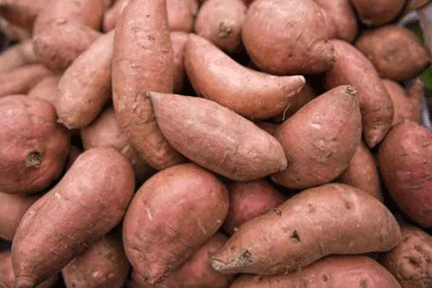Potato, potahto, camote
News Category: News and Food and Drink
-
Published May 31, 2022
I’m an unabashed lover of sweet potatoes — camotes in Spanish — in just about every way, shape or form.
by Janet Blaser
Baked, mashed, fried, chips: you name it, I love it. And one of the wonderful surprises about living in Mexico has been the camoteros, street vendors selling oven-roasted sweet potatoes. On my street, Luis comes every Monday evening like clockwork around 6 p.m. with his little rolling stainless steel oven, its steam whistle announcing his arrival.
Here in Mazatlán, locals like to eat them bathed in sweetened condensed milk, which is way too sweet for me. Sometimes I just get them “natural” and add my own butter and salt. Other nights, I might get a mixed plate of sweet potatoes and plantains, to either eat plain or to cut up and add to a Thai curry made earlier and sitting at the ready on my stove. Especially in the summer, when one is loath to turn on the oven, it’s just so convenient! Also common are candied sweet potatoes, dripping in piloncillo (whole cane sugar) syrup, available in the mercados and in almost every neighborhood store.
Sweet potatoes, it turns out, are not really potatoes at all (and not the same as yams, either). Regular potatoes are tubers in the nightshade family; sweet potatoes are considered a root vegetable and from the morning glory genus. Kind of obviously, sweet potatoes have much more natural sugar than a regular potato — more than 10 times as much — and more carbs, fat and calories too. Whatever; they’re delicious.
The word camote comes from the Náhuatl camohtli; in some parts of Mexico and other South American countries, sweet potatoes are known as papa dulce, batata or patata dulce. Interestingly, in the Phillipines they’re called kamote.
-


Leave a Reply